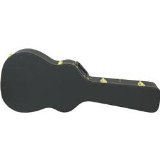

David Gilmour and Roger Waters buried the hatchet and performed together in 2010!
ONE FOR ALL AND ALL FOR ONE
Starting a band is something that I believe EVERY guitarist dreams of achieving. The excitement and energy of 4 or 5 individual musical craftsman, or craftswomen, coming together in a balance of rhythm and harmony are essential in making music an art-form. This creative mixture from coming together also begins the process where each of the individual voices join together and becomes one sonic stream or single unified voice.
On the flip side, sometimes the voices no longer align. When the magic is missing, things start to fall apart. Band break ups can be some of the most traumatic emotional experiences that a musician will go through, often filled with drama and aggravation that can turn lifelong friends into enemies. When you look at some of the greatest bands, like Pink Floyd for example, and then think about the depth of artistry they created together yet for reasons we will never truly know, it just didn’t work out for them at some point.
KEEP A POSITIVE ATTITUDE – DON’T BURN BRIDGES!
If the band should break up, it doesn’t have to mean the end of your musical career. Bouncing back into a stable creative mindset, you can really shape your own vision and go for it. But there are a few things to remember when breaking ties with your bros in the band. Here are a few tips to help you have a smooth break up:
- Be upfront and be honest – There’s no reason to dance around the truth when it comes to a split. Just be upfront and let each member have their own opinions about how it all went down.
- Don’t bad mouth anyone – No matter how mad that drummer made you or how many times the keyboardist told you your not in tune, you don’t want to burn bridges by talkin’ trash. Just let it go and get creative. The music community is smaller than you think and you don’t want to be know for being difficult or talking bad about others.
- Take the power back – No matter what happened, it happened. Now it’s your time to dive back into your creative side and play your fingers off! The surge you’ll get from being expressive will amp you up and give you more confidence to do it on your own.
IN CONCLUSION…
Remember to stand up, dust yourself off and get ROCKIN’!
* * * * *
Scott “SVH” Von Heldt is a staff writer for SMG. Scott has worked with members of White Zombie, Cirque Du Soliel and many others. In late 2008 he released the first book of his Mystic Art of Self-Discovery series entitled Mind Over Metal: The Musician’s Guide to Mental Mastery. Email: SVH@sharemyguitar.com
Join the #1 Guitar Social Network! It’s COOL and it’s FREE! Connect with like minded people. Learn, share and rock!
Like this post? Then you won’t want to miss the other awesome posts we have planned. Subscribe to Share My Guitar and get new posts delivered daily…for FREE!
















